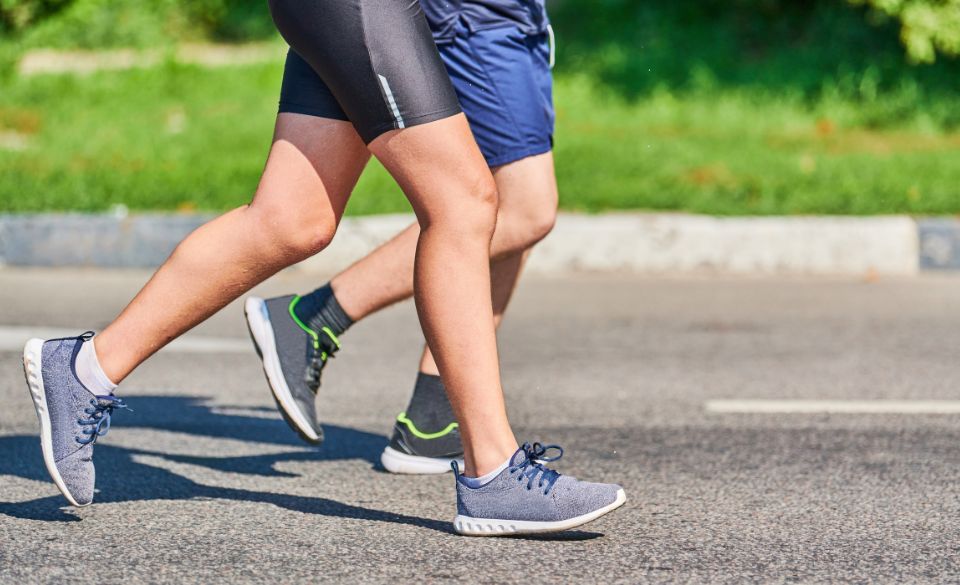
The Runner’s Secret Weapon: The Versatile Uses of Vaseline
As a runner, you’re likely familiar with the discomfort and chafing that can accompany long-distance runs. To alleviate these issues, many runners turn to a trusty ally: Vaseline. This versatile petroleum jelly has been a staple in the running community for its ability to reduce friction and prevent chafing. In this article, we’ll explore the various strategic places where runners commonly apply Vaseline, helping you maximize its benefits and enhance your running experience.
Why Vaseline Is Important For Runners
Vaseline, the humble petroleum jelly, holds a special place in the hearts of many runners. It’s a secret weapon that helps protect and soothe, making it an essential companion for those pounding the pavement or hitting the trails. But why is Vaseline so important for runners? Let’s explore its unique benefits:
1. Chafing Prevention: Chafing, the friction-induced irritation of the skin, is a common enemy for runners. Vaseline acts as a reliable barrier that reduces friction between body parts and between the skin and clothing. By applying a thin layer of Vaseline to areas prone to chafing, such as the inner thighs, underarms, and nipples, runners can significantly reduce the risk of painful rubbing and irritation.
2. Blister Defense: Blisters are the bane of every runner’s existence. When shoes rub against the skin, blisters can form, causing discomfort and hindering performance. Vaseline comes to the rescue by creating a protective layer that reduces friction between the skin and shoes. By applying it to areas prone to blistering, like the heels, toes, and sides of the feet, runners can minimize the risk of painful blisters and continue running in comfort.
3. Skin Hydration: Long runs, exposure to the elements, and sweating can take a toll on the skin, leaving it dry and vulnerable. Vaseline acts as a moisturizing agent, helping to lock in moisture and prevent excessive dryness. By applying Vaseline to areas of the body that are exposed or prone to drying out, such as the face, lips, and hands, runners can keep their skin hydrated and protected, even during challenging conditions.
4. Weather Defense: Runners often face diverse weather conditions, from scorching sun to biting cold. Vaseline provides a protective barrier against the elements, acting as a shield for the skin. In hot weather, it helps prevent sunburn and windburn. In cold weather, it helps protect against the drying effects of cold air and wind. By applying Vaseline to exposed areas, such as the face and ears, runners can maintain their skin’s integrity and minimize discomfort caused by extreme weather conditions.
5. Comfort and Focus: Running should be a joyous and immersive experience, and discomfort can distract from that. By using Vaseline to address potential sources of irritation, runners can focus on their form, pace, and breathing without the nagging distraction of chafed skin or blisters. Vaseline provides a sense of comfort and confidence, allowing runners to fully enjoy their workouts or races.
It’s important to note that while Vaseline is a versatile ally for runners, it’s always advisable to test it during training runs before relying on it for important races or events. Additionally, individual preferences may vary, so finding the right application technique and quantity is a matter of personal experimentation.
Where Do Runners Put Vaseline
Nipple Protection: Guarding Against Nipple Chafing
One of the most notorious sources of discomfort for long-distance runners is nipple chafing. To prevent this painful condition, runners often apply a thin layer of Vaseline to their nipples before a run. The lubricating properties of Vaseline create a protective barrier, reducing friction between the skin and fabric, thus minimizing the risk of chafing and irritation.
Thighs and Groin: The Battle Against Inner Thigh Chafing
Chafing between the inner thighs and in the groin area can quickly turn a pleasant run into a painful experience. To combat this, runners commonly apply Vaseline to these high-friction areas. By doing so, the smooth texture of Vaseline reduces friction, preventing skin irritation and discomfort caused by repetitive leg movements.
Feet: Keeping Feet Blister-Free
Blisters are the bane of every runner’s existence. To protect the feet from blisters, runners apply Vaseline to areas prone to friction, such as the heels, toes, and sides of the feet. The lubricating properties of Vaseline create a barrier that reduces rubbing between the skin and shoes, preventing blisters from forming and allowing for a more comfortable and blister-free run.
Underarms: Banishing Underarm Chafing
Underarm chafing can be a pesky problem, especially during hot and humid runs. Applying Vaseline to the underarm area helps reduce friction between the skin and clothing, preventing chafing and irritation. This allows runners to focus on their stride and performance without the distraction of uncomfortable chafed underarms.
Sports Bras and Waistbands: Comfortable Support with Vaseline
The combination of sweat, movement, and tight-fitting sports bras or waistbands can lead to chafing and irritation. Applying Vaseline along the bra straps, under the band, or on the waistband helps reduce friction, ensuring a more comfortable and irritation-free run. By creating a protective barrier, Vaseline helps keep these areas smooth and free from chafing-related discomfort.
Forehead and Cheeks: Protecting the Face from the Elements
For runners braving the elements, applying Vaseline to the forehead and cheeks can offer protection from windburn and extreme weather conditions. Vaseline acts as a barrier against the cold air, reducing the risk of dryness and irritation. It also helps prevent chapped skin, allowing runners to focus on their performance while keeping their face protected.
Final Words
Vaseline is more than just a simple petroleum jelly; it’s a runner’s secret weapon against chafing, discomfort, and irritation. By strategically applying Vaseline to areas prone to friction, runners can create a protective barrier that reduces chafing and allows for a more enjoyable running experience. From the nipples to the thighs, feet, underarms, and even the face, Vaseline proves its versatility in preventing chafing, blisters, and other running-related issues. So, the next time you gear up for a run, don’t forget to grab your trusted jar of Vaseline and harness its power to keep you comfortable and focused on your stride.
Remember, when applying Vaseline, a little goes a long way. It’s important to apply a thin and even layer to the desired areas. Excessive application can lead to a greasy feeling or even interfere with the breathability of certain fabrics. Experiment with the amount that works best for you to find the right balance.
It’s worth noting that while Vaseline is generally safe for external use, it’s essential to be mindful of any allergies or sensitivities you may have. If you experience any unusual reactions or discomfort after applying Vaseline, discontinue use and consult with a healthcare professional.
In addition to using Vaseline, it’s important to wear moisture-wicking and breathable clothing, choose properly fitted shoes, and maintain good hygiene practices to further reduce the risk of chafing and irritation during your runs.
So, the next time you lace up your running shoes, don’t forget to include Vaseline in your running routine. Embrace its versatile benefits and let it be your ally in the battle against chafing, blisters, and discomfort. With Vaseline on your side, you can focus on what you love most—running with ease and enjoying the journey.




